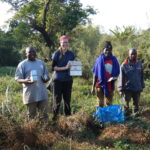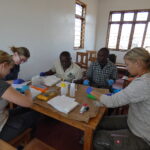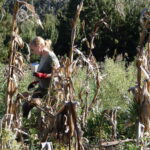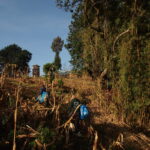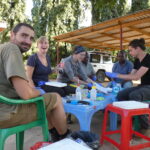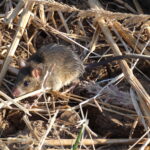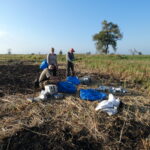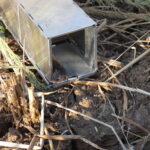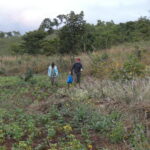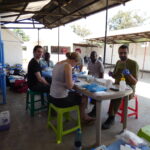A recent study led by researchers from the University of Antwerp, the Institute of Vertebrate Biology (IVB) of the Czech Academy of Sciences and the Sokoine University of Agriculture in Morogoro screened 1225 rodents and shrews in Tanzania for mammarenavirus RNA, revealing mammarenaviruses might be even more specific than usually thought. The researchers associate taxa below the species level rather than rodent species with certain mammarenaviruses. Host genetic structure may thus be crucial to understand in which rodent reservoirs in which geographic regions we can expect to find them.
Many small mammal species across Africa are genetically structured and several serve as reservoirs of multiple mammarenaviruses. In this study researchers tie these two observations together. They focused on mammarenaviruses from Tanzania, a key biogeographic crossroads in Eastern Africa where many small mammal clades come together. Previous research by Dr. Joëlle Goüy de Bellocq from IVB has identified local ‘hotspots’ in Tanzania where up to three mammarenaviruses can be detected in sympatric rodents within a relatively small sampling area.
| Mammarenavirus is a genus of viruses that belong to the family Arenaviridae. They are mostly found in rodents and were sporadically reported from shrews and bats. They are mainly transmitted to humans through contact with infected rodents, such as Mastomys natalensis, which is the most studied carrier of these viruses in sub-Saharan Africa. |
Lead author Laura Cuypers explains: “In previous studies by our groups we demonstrated that the distribution of different mammarenaviruses can be explained by the genetic structure of Mastomys natalensis: different subspecific taxa each carry their own mammarenavirus and one of them even two. Natal Mastomys are one of the most widespread and abundant African rodents. They usually live in close proximity to people in agricultural fields and even inside houses. Unfortunately, they eat crops and can transmit several pathogens. One of these pathogens is Lassa virus, the mammarenavirus that Mastomys natalensis carries in Western Africa, where the CDC estimates it infects hundreds of thousands and kills about 5,000 people each year. The mammarenaviruses carried by Mastomys natalensis in Tanzania are not known to spill over to humans and cause disease, but in this study, we checked if we could find spill-over to other rodents living together with Mastomys natalensis in agricultural fields.”
The researchers found new mammarenaviruses in six rodent samples belonging to two rodent species: Mus minutoides and Grammomys surdaster. “Genetic characterization confirmed they were not spill-over from M. natalensis. From their similarity to other known mammarenaviruses, it seems that several mammarenaviruses have jumped from one rodent host to another rodent from the same tribe. Similarly, to the mammarenaviruses carried by Mastomys natalensis, different viruses also appear to be associated with different subspecific taxa of Mus minutoides and Grammomys surdaster,” says lead researcher Dr. Joëlle Goüy de Bellocq.
| Rodent taxa are classifications of rodents based on their genetic and morphological characteristics. This includes the order Rodentia, which is further divided into suborders, superfamilies, families, subfamilies, tribes, genera, and species. Additionally, subspecific taxa such as subspecies can be used to further differentiate between groups of individuals below the species level. These classifications are important for understanding the genetic structure and evolutionary history of rodent populations and their associations with specific pathogens like mammarenaviruses, which can have important implications for public health. |
The researchers highlight the importance of studying the genetic structure of small mammals, indicating it may be crucial to understand virus host specificity and distributions. While the viruses described in this study are not known to be pathogenic to humans, there are implications for human health as several other mammarenaviruses can spill over to humans and cause severe diseases, including hemorrhagic fever. Correct identification of mammarenavirus hosts and their distribution can thus help to understand where and from which rodents people could get infected. The study was conducted over a period of more than ten years and the results were published in the journal Virology.
DOI: https://doi.org/10.1016/j.virol.2023.02.014


